Fishes
Media

Species Types
Scientific Name
Ichthyomyzon castaneus
Description
The chestnut lamprey is an eel-like fish that many people find interesting because it's a vampire to other fish. Adults have a well-developed, rasplike oral disc, seven porelike gill openings, no paired fins, and a single nostril.
Media

Species Types
Scientific Name
Anguilla rostrata
Description
The American eel is considered an uncommon catch by Missouri sport anglers. This species is known to take natural baits and rarely takes artificial baits.
Media
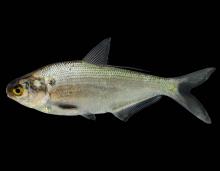
Species Types
Scientific Name
Dorosoma cepedianum
Description
The gizzard shad is one of the most common and abundant fish in Missouri. In Missouri, this schooling fish occurs in every major stream system and is most abundant in reservoirs and large rivers.
Media

Species Types
Scientific Name
Dorosoma petenense
Description
The threadfin shad occurs in the Mississippi River and its tributaries. It also occurs in mainstem reservoirs of the White River Basin and in Montrose Lake and the South Grand River in Henry County.
Media

Species Types
Scientific Name
Alosa chrysochloris
Description
The skipjack herring is an active fish, moving about continuously in large schools. It probably occurs at least occasionally in most of the large rivers of the state where its migrations are not blocked by dams.
Media
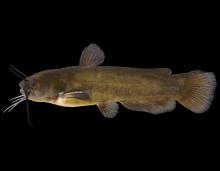
Species Types
Scientific Name
Ameiurus natalis
Description
The yellow bullhead is widespread in Missouri. It is the most common bullhead catfish in the Ozarks and Bootheel lowlands. It has white chin barbels, and the edge of its tail fin is straight, not notched.
Media
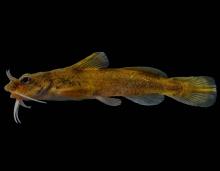
Species Types
Scientific Name
Noturus eleutherus
Description
The mountain madtom is rare and endangered in Missouri. This small catfish has been recorded from only a few locations in the southeastern portion of the state.
Media
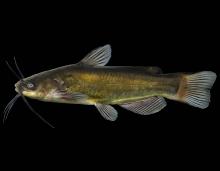
Species Types
Scientific Name
Ameiurus melas
Description
The black bullhead is widespread in Missouri. It is the most common bullhead catfish in north and west portions of the state. It has dusky or black chin barbels, and the edge of its tail fin is notched, not straight.
Media

Species Types
Scientific Name
Esox americanus vermiculatus
Description
The grass pickerel is the most common and widely distributed pike in Missouri. It is also the smallest, seldom exceeding 10 or 12 inches in length.
Media
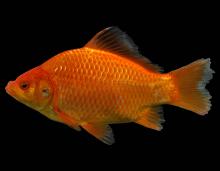
Species Types
Scientific Name
Carassius auratus
Description
Goldfish are not native to North America. They often escape into the wild from bait buckets and other causes, but there are few self-sustaining populations in Missouri.
See Also


Media

Species Types
Scientific Name
Amphiuma tridactylum
Description
The three-toed amphiuma is an eel-like, completely aquatic salamander. It has very small forelimbs and hind limbs, each with three tiny toes. In Missouri it’s found only in the Bootheel region.
Media

Species Types
Scientific Name
Siren intermedia nettingi
Description
The western lesser siren is an eel-like, aquatic salamander with external gills, small eyes, small forelimbs with four toes, and no hind limbs. In Missouri, it’s found mostly in the Bootheel and northward in counties near the Mississippi River.
About Fishes in Missouri
Missouri has more than 200 kinds of fish, more than are found in most neighboring states. Fishes live in water, breathe with gills, and have fins instead of legs. Most are covered with scales. Most fish in Missouri “look” like fish and could never be confused with anything else. True, lampreys and eels have snakelike bodies — but they also have fins and smooth, slimy skin, which snakes do not.





















